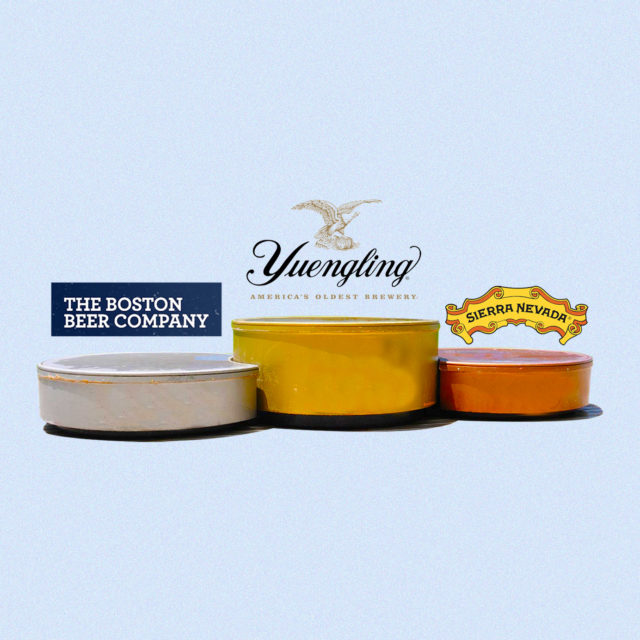The Brewers Association recently released its annual look at the state of the craft brewing industry in America. These reports include two primary sets of data: the Top 50 Craft Brewing Companies, listing the 50 largest small and independent breweries by sales volume; and an annual growth report for the U.S. craft brewing industry showing overall industry production numbers.
As this data is based on 2019, these figures will likely change dramatically next year, when production and sales data for 2020 is accounted for. Early indications show that Covid-19’s impact on the craft brewing industry will be anywhere from bad to catastrophic.
Given this reality, VinePair looked at past data sets, going all the way back to 2008, to see what the industry looked like during the global financial crisis of 2007-2008. From there, we analyzed how the 10 largest craft brewing companies have — and haven’t — changed in the intervening years.
What emerged was a fascinating look at an industry that, in some respects, barely resembles itself slightly more than a decade ago; and in other regards, is remarkably similar. The animated chart below showcases these diverging trends.
Click on the line or logo of any companies to highlight their performance over time. Click in the blank areas of the chart to rewind or fast forward to a specific year.
By limiting ourselves to the 10 largest craft brewing companies in the U.S., three distinct periods emerge: 2008 to 2013; 2014 to 2017; and 2018 through present day.
2008 to 2013
The first period, starting in 2008, saw a lot of change in the bottom half of the top 10, as once familiar craft breweries consolidated, were purchased by non-craft players, or fell out of favor. Indeed, some of the names from 2008 may not resonate with younger beer geeks: Pyramid Breweries (5) and Magic Hat (8) merged, briefly appearing later as Independent Breweries United, before being purchased by a Costa Rican food and beverage conglomerate. Matt Brewing (7) most recently ranked 16th, but the Saranac brewer is probably better known as the contract brewer for larger brands like Brooklyn Brewery. The ninth largest brewery in 2008, Full Sail, has seen its fortunes steadily decline — as we’ll later see, this Oregon brewery finishes as the country’s 46th largest brewery in 2019. Harpoon Brewery, of Boston, also hung around the bottom of the top 10 from 2009 through 2012.
Toward the end of this period, some of today’s largest national or regional craft breweries also clawed their way into the top 10. Those breweries and the year they first cracked the top 10 are: Bell’s Brewery (2010), Lagunitas Brewing (2011), Stone Brewing (2012), Brooklyn Brewery (2013) — all names that should be familiar to any craft beer drinker.
2014 to 2017
2014 marked a major shift in how the Brewers Association defined a craft brewer/brewing company, allowing D. G. Yuengling & Son to make its initial appearance on the list in the pole position. With this change, the breweries ranked one through three from 2008 until 2013 all moved down a position. Those breweries, Boston Beer Co., Sierra Nevada Brewing, and New Belgium Brewing, represent a remarkable constant in an industry that has changed so much since 2008.
Ranked one to three respectively from 2008 until 2013, these three players continued to dominate the list, ranking two to four, in the same order, through the end of 2019. With New Belgium’s sale to Kirin’s parent company, we’ll see this era-spanning streak come to an end.
Within this second period, 2016 in retrospect was a symbolically important year. Boulevard Brewing, which had appeared in the top 10 independently from 2008 to 2011, briefly returned to the top 10 in 2013 as a subsidiary of Duvel Moortgat USA. At that point, the venerated Belgian brewer’s American operations consisted of Boulevard and Brewery Ommegang. When Duvel Moortgat USA returned to the top 10 in 2016 at No. 6, popular California brewery Firestone Walker was also under its corporate umbrella. In the same year, Oskar Blues entered the top 10 in the final position, though a year later it, too, would hold that position as CANarchy, a self-described “disruptive collective of independent brewers.”
2017 to 2019
The final period, 2017 through 2019, can best be described as tenuously stable. In recent years, only a single new brewing company has entered the top 10: Artisanal Brewing Ventures, a private-equity-backed umbrella company with Southern Tier, Victory, and Sixpoint in its stable, in 2019 at No. 10.
While on the surface, things would appear stable, as we’ve written many times before, the marketplace for the country’s largest independent craft breweries has become a very difficult place. For most, the only way to survive has been to combine, sell out, or diversify.
A look at most members of 2019’s top 10 list says it all: Yuengling (1), while a craft brewer according to the BA’s current standards, is essentially a smaller-scale macro lager producer. Boston Beer (2) scooped up Dogfish Head last year, and relies on hard seltzer (Truly) and other FMBs for nearly all of its growth. New Belgium (4) sold to a large Japanese brewing company and will be leaving the list altogether. Duvel Moortgat (5), CANarchy (8), and Artisanal Brewing Ventures (10) are all multi-brewery firms.
While no one can predict what the rest of 2020 will bring, early indications are that consumers are showing renewed interest in large, familiar craft brands. When we eventually begin our return to normal, whenever that may be, it will be interesting to see if this change in consumer behavior sticks.
This story is a part of VP Pro, our free platform and newsletter for drinks industry professionals, covering wine, beer, liquor, and beyond. Sign up for VP Pro now!
